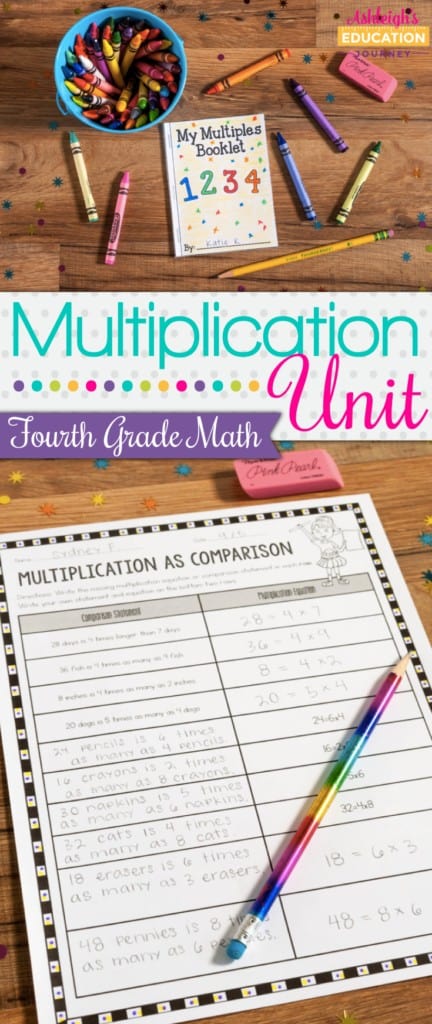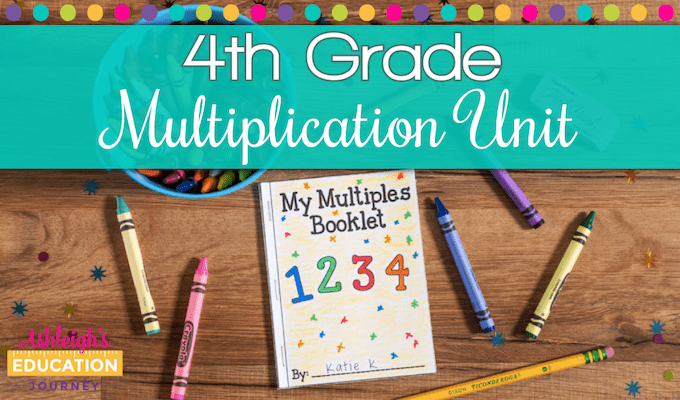
There are few things more exhausting, yet exciting, than the start of a new school year. I had to put my product creating and blogging on pause for a couple of weeks while I set up my new classroom and taught my first week of school. During this time of year, I always feel like there are a million things I need to do, but it’s hard to sit and concentrate on any one thing. I did want to take a minute to share about one of my newest math projects….Unit 3 4th Grade Multiplication Unit.
I love the way this unit takes multiplication and slows it down into a step-by-step process that is manageable for students. I start the unit with a week teaching about multiples, factors, prime numbers, and composite numbers. As always, I tried to incorporate higher order thinking tasks and hands-on activities for the lessons, because I want my students to do more than memorize terms and procedures.
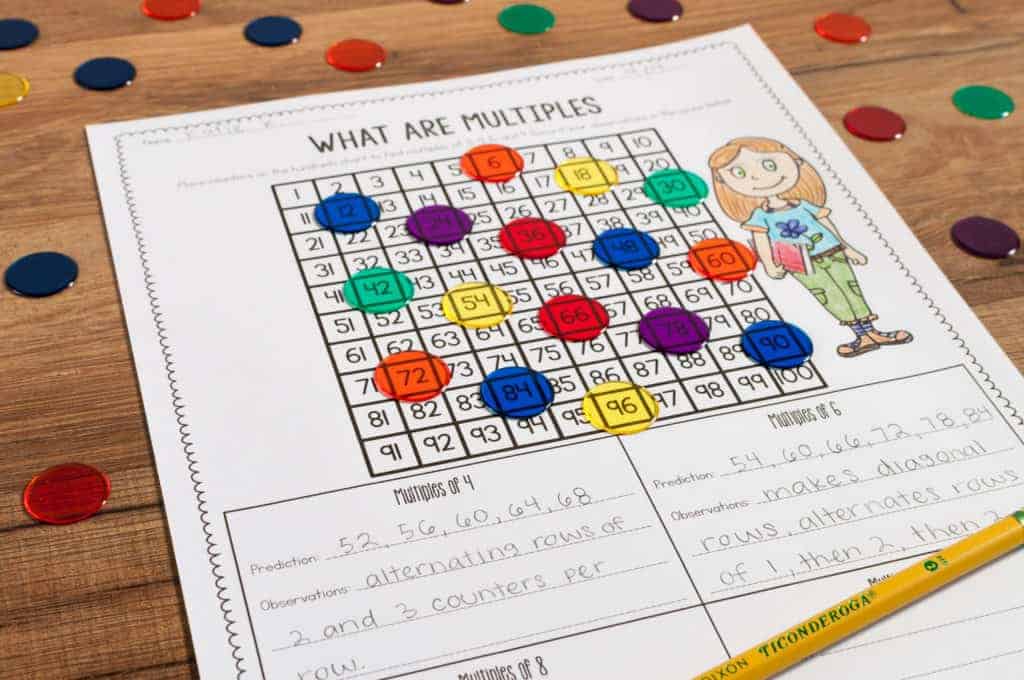
I absolutely love this multiples booklet, and I think it will be a big help to students as they begin to think about the multiples of one-digit numbers.
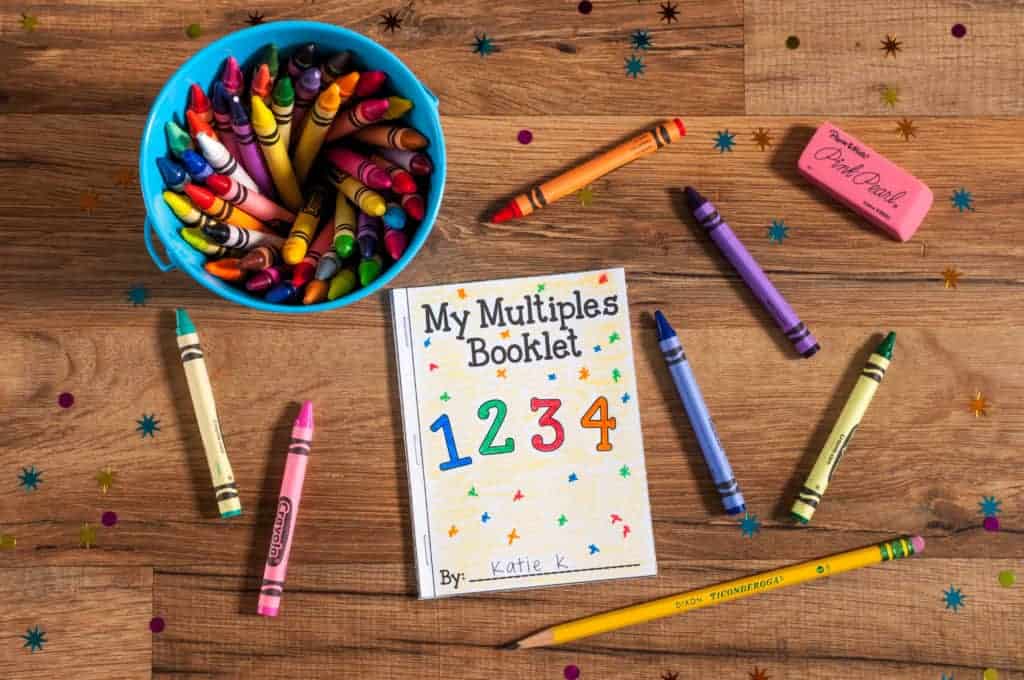
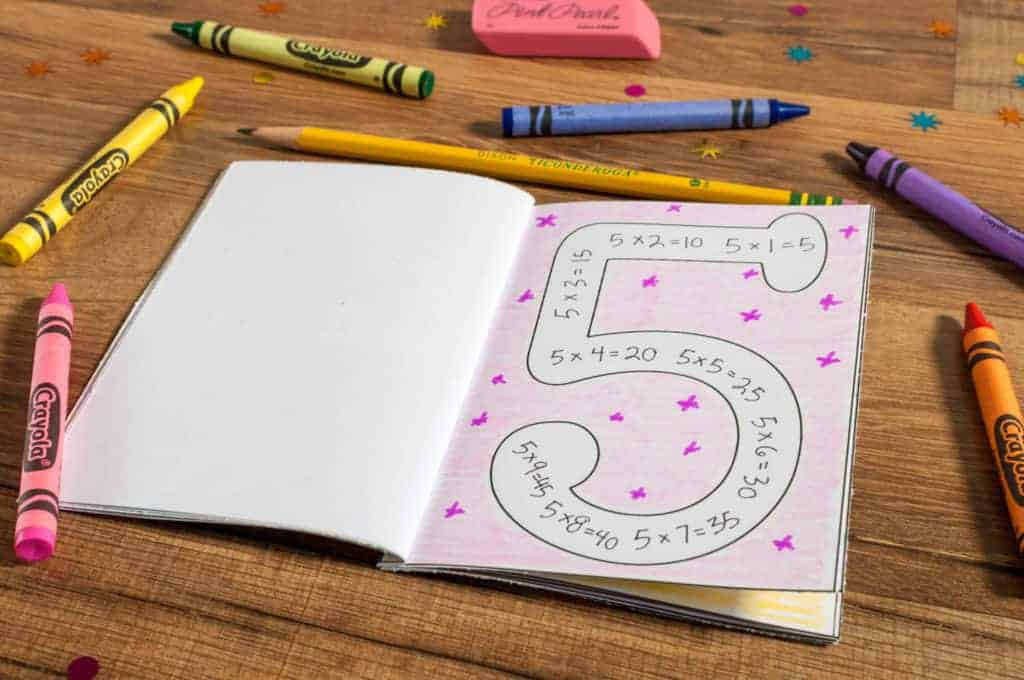
I devote another week to teaching multiplication as a comparison. During this week, I also begin to introduce 2-digit by 1-digit multiplication. Since third graders learned about the distributive property the previous year, this next step shouldn’t present too much of a challenge for my fourth graders. I also include lessons on the difference between multiplicative comparison and additive comparison, which can be a bit tricky.
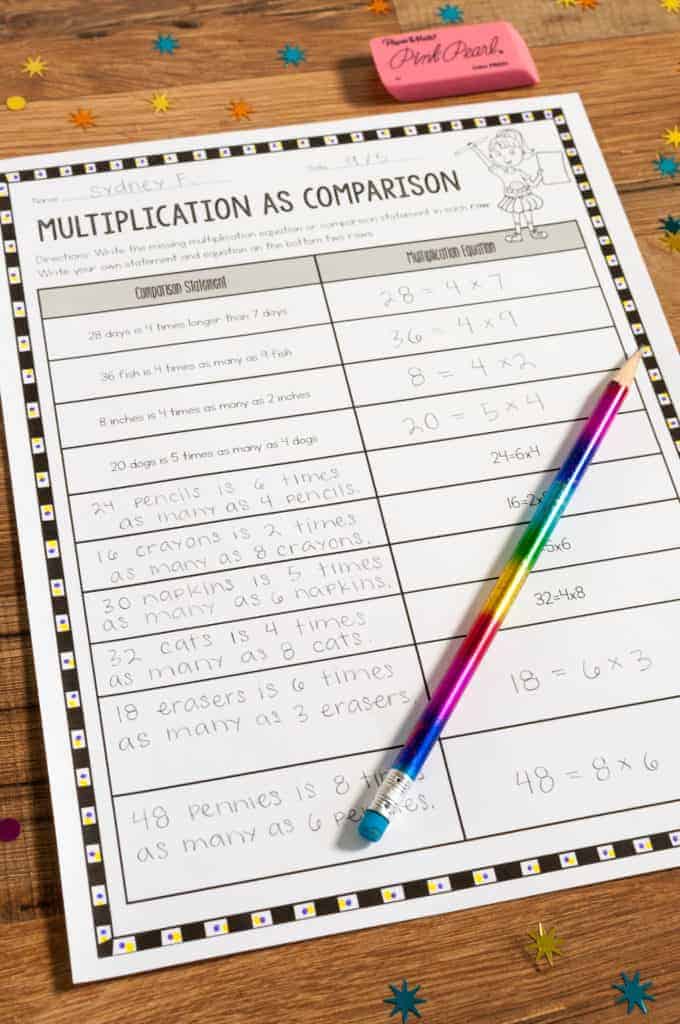
The third week of the unit is when students begin learning to use an area model (box model or box method) and partial products to multiply 3-digit by 1-digit numbers. The following week moves students into multiplying 4-digit numbers by 1-digit numbers using the same strategies. In the last week of the unit, students learn to multiply 2-digit by 2-digit numbers. Writing this part of the unit was a lot of fun for me, because it allowed me to clearly see the connection of what students learn in k-3 to what I teach in fourth grade. It also made me wonder where these strategies were when I was in third and fourth grade! Math would have made so much more sense to me! I will introduce three different strategies, because I want my students to have the opportunity to use the strategy that works best for them. Regardless of which strategy or method students choose, I think the conceptual instruction will give them a much more solid understanding of multiplication of larger numbers than they would have ever had learning the algorithm in isolation.
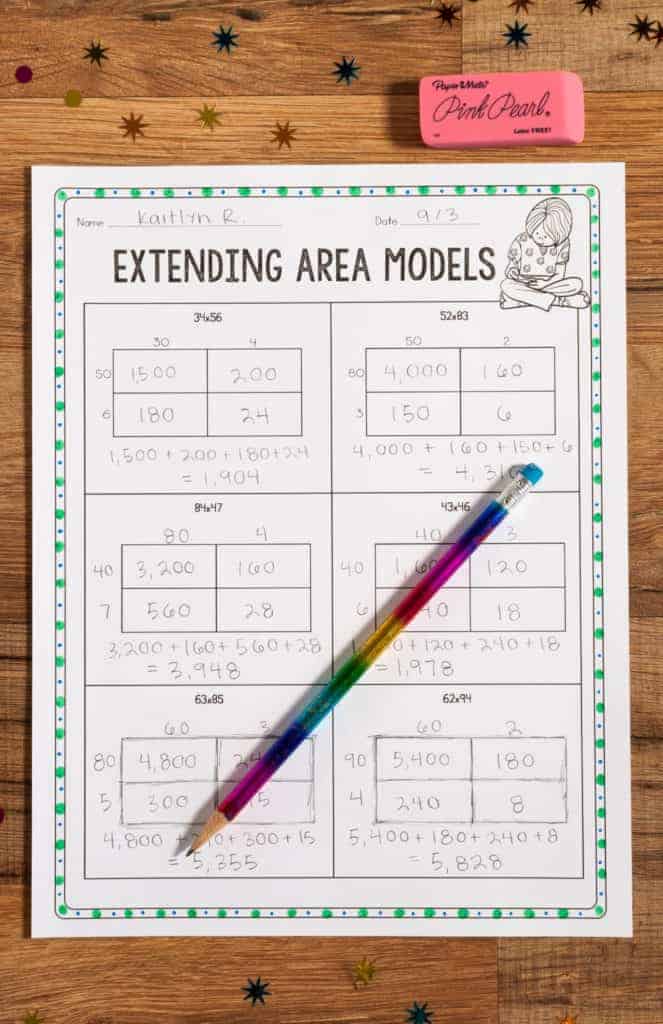
I also include several games in the unit. Some are simple paper-pencil games where students use a paperclip to make a spinner. This is such an easy method, but students always love it! Games can be a bit tricky in units that incorporate computation of large numbers, but I think it’s incredibly important for students to enjoy what they are studying.
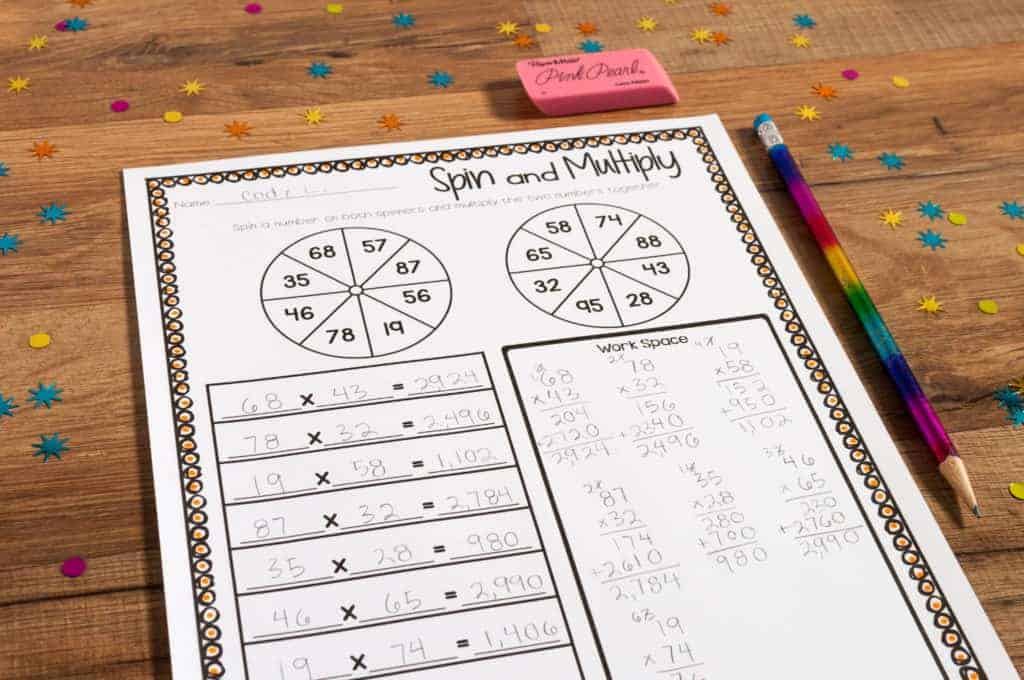 These Number Riddles are some of my favorite task cards. I love how they encourage critical thinking, as well as mental math strategies. I will use these task cards in one of my math work station activities.
These Number Riddles are some of my favorite task cards. I love how they encourage critical thinking, as well as mental math strategies. I will use these task cards in one of my math work station activities.
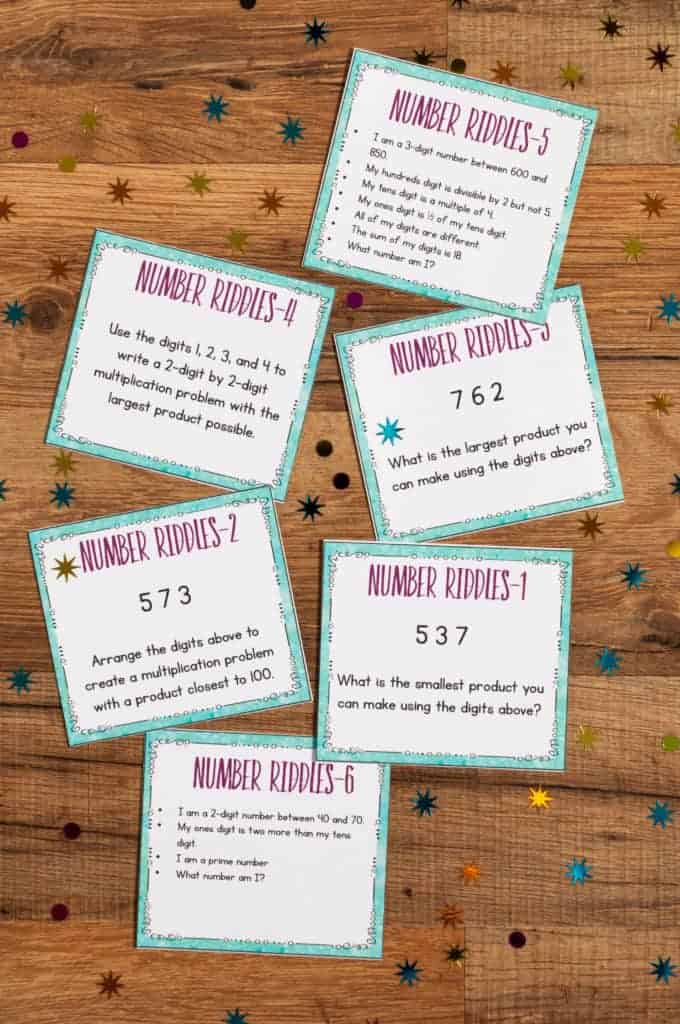
I made a few Multiples Puzzles that I plan to use as another one of my math work station activities. In this activity, students take a baggie of precut strips (print on cardstock and laminate). Students use the numbers on the bottom as a guide and will arrange the numbers in order from least to greatest to form a picture. This is a self-checking activity, because students will know if their picture does not make sense. I plan to have my students use the numbers at the bottom of the picture to determine what multiple is used on the bottom of the strips.
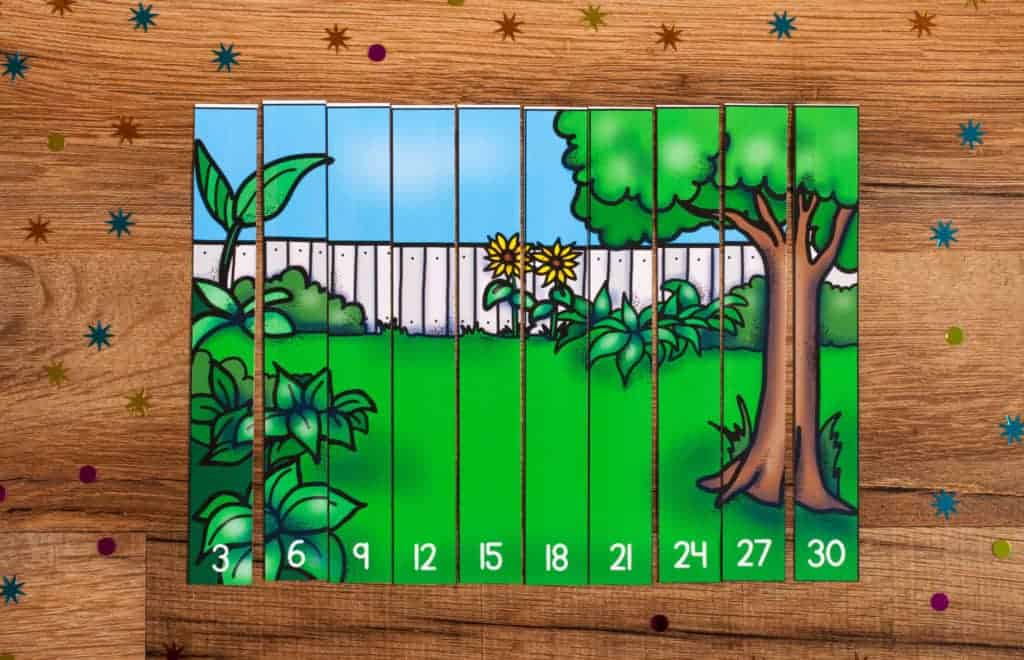
Like my other math, writing, and reading units, I’ve written a formal lesson plan for each of the lessons. In the lesson plan I include the standard, materials, mini lesson, work time, closing, extension, intervention, formative assessment, and essential questions.
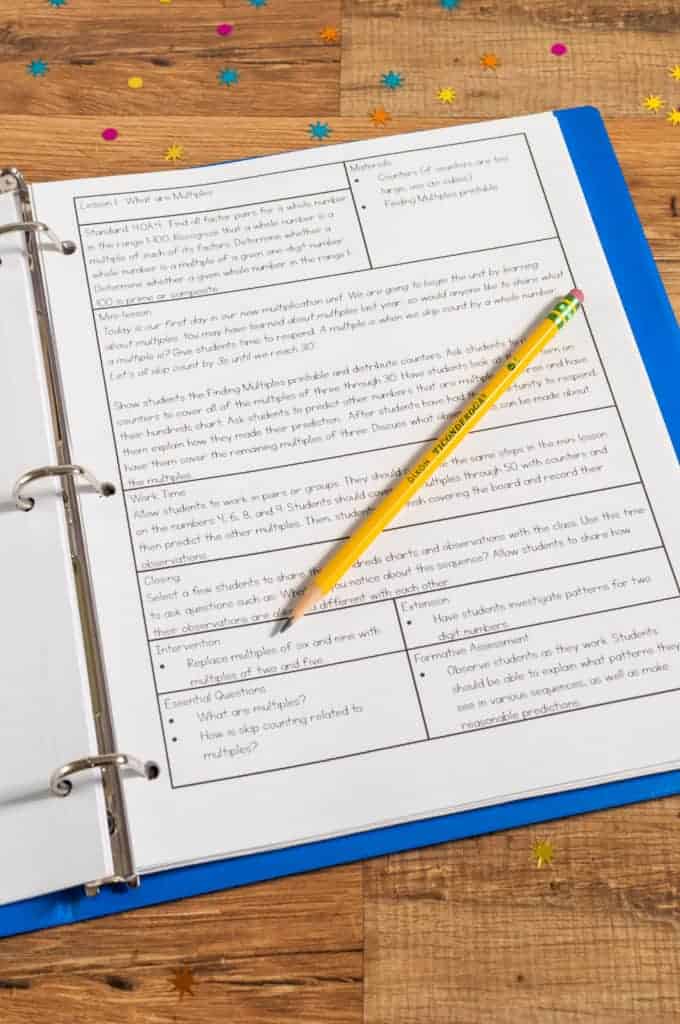
I also have a few FREE practice pages for three and four digit multiplication that you can use as needed. I occasionally used these as exit tickets or practice pages that we completed together in small groups. You can download those pages here.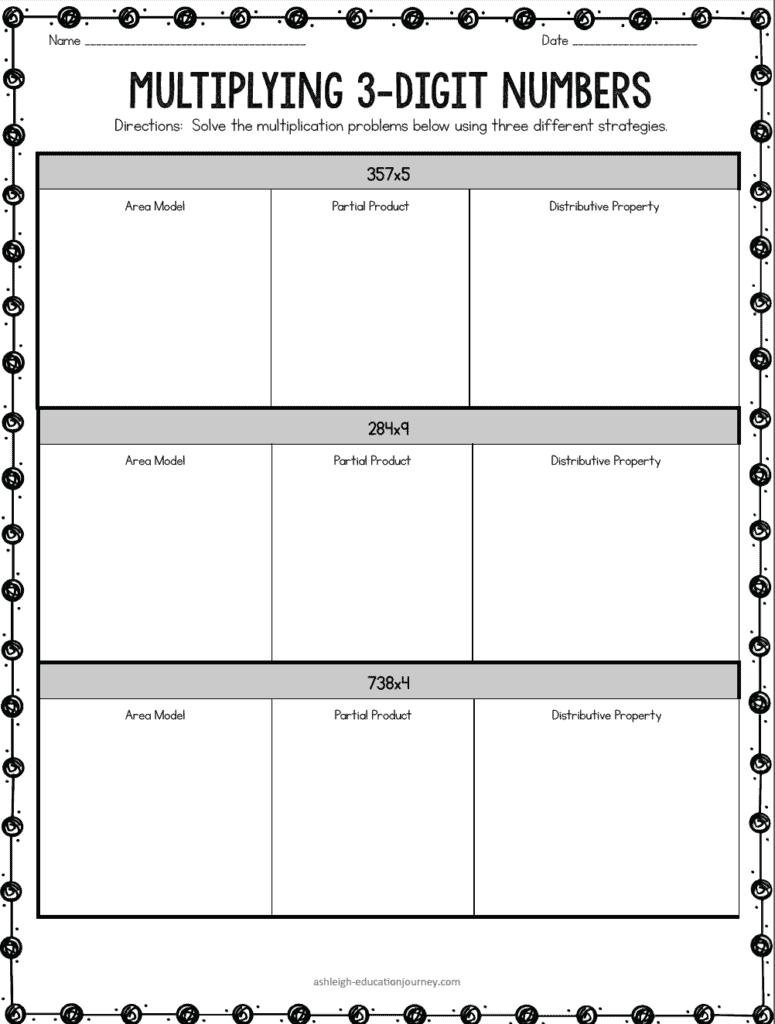 I’m excited to have this unit ready, and I’ll be even more excited to finish the division unit. I believe I’ve spent longer on that unit than any other math unit I’ve ever designed!
I’m excited to have this unit ready, and I’ll be even more excited to finish the division unit. I believe I’ve spent longer on that unit than any other math unit I’ve ever designed!
